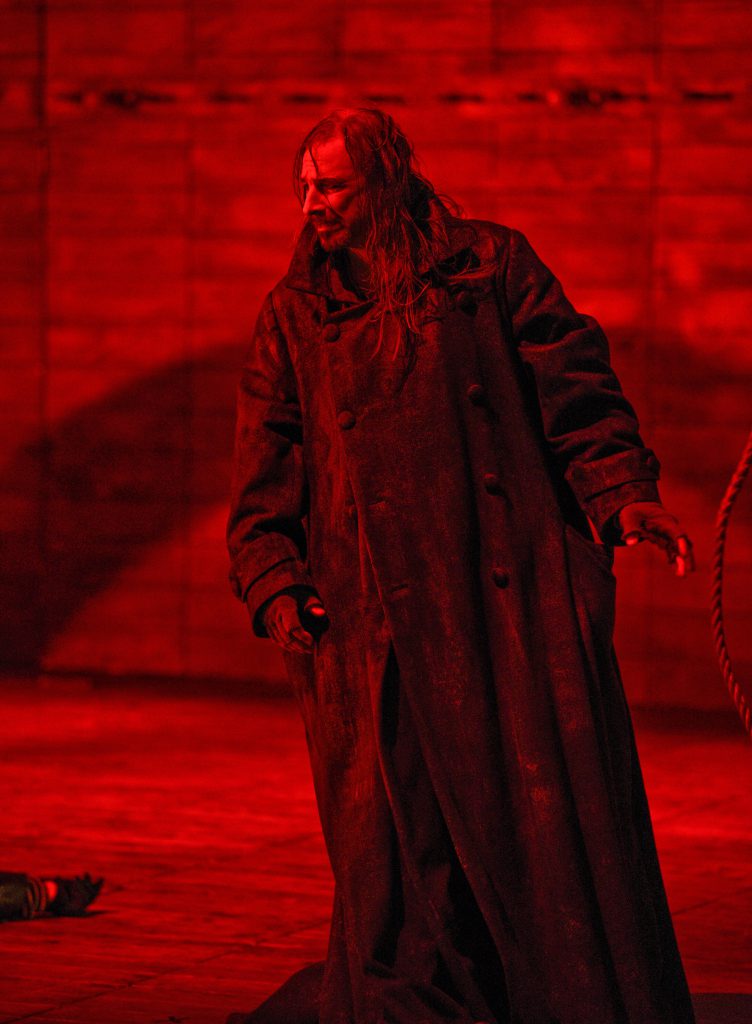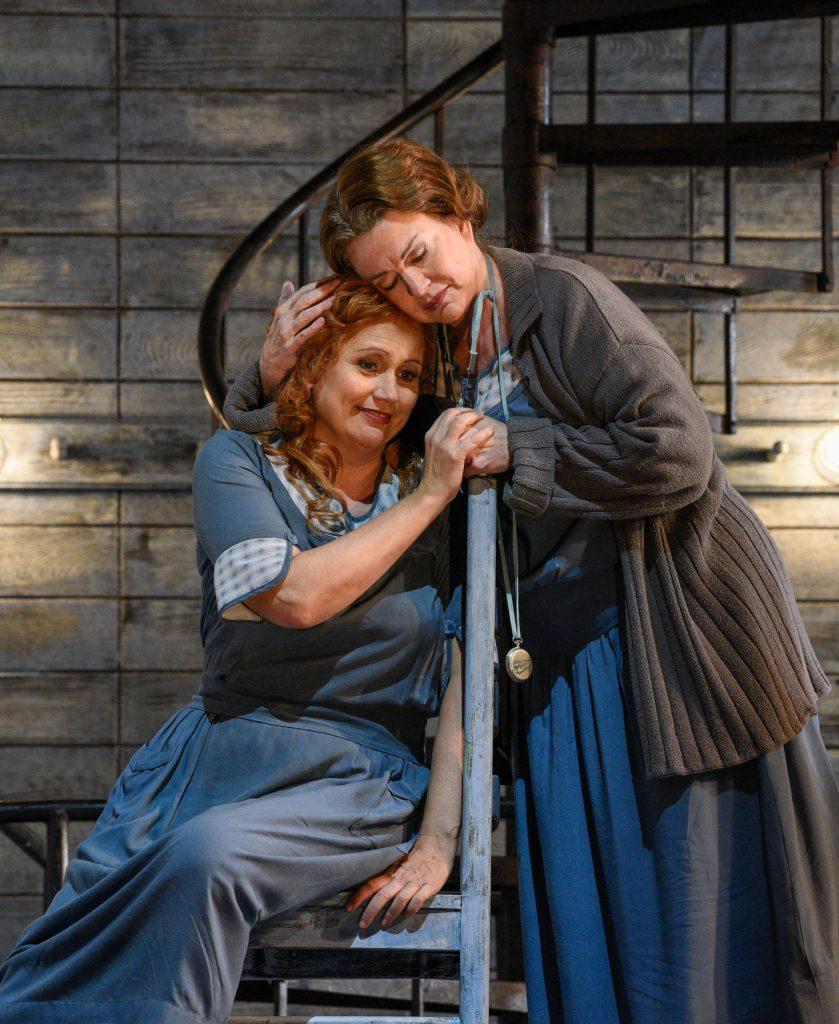Dallas Opera opens season with a visually charged, musically excellent “Dutchman”

Greer Grimsley stars in Wagner’s “The Flying Dutchman” at Dallas Opera. Photo: Karen Almond
Dallas Opera opened its 2018-19 season Friday night at Winspear Opera House with a stark production of Wagner’s The Flying Dutchman that gradually and subtly flowing from a dark opening toward a brilliantly charged, electrifying conclusion.
That the performance would be musically on target was evident in the opening bars, many minutes before the curtain rose. Conductor Emmanuel Villaume guided the orchestra through a detailed delineation of the rich counterpoint and layered textures of the extended overture.
Villaume, who has frequently proved his sensitivity and insight in the Italian and French repertoire, immediately showed himself also at home with the grand gestures and lyricism of this German romantic score. Though the music is unmistakably Wagner, the style is still rooted in Beethoven and early romanticism, and the composer had not yet developed the full-blown chromaticism and leitmotif technique that would characterize his mature operas. Villaume showed a clear understanding of the momentum of this slow-to-unwind score as well as a sure insight into the language of Wagner’s poetry as part of the musical texture.
This musical excellence played out within the grimly evocative production from Toronto’s Canadian Opera, with sets and costumes by Allen Moyer. Director Christopher Alden, who premiered this 2010 staging, is also helming these Dallas performances.
The unit set was made up of a giant, sloping box, dominated by a large, partially submerged wheel and a spiral staircase. The characters wore costumes of the early twentieth century—but with one horrific addition: the occasional glimpse, beneath the box set, of prisoners in concentration-camp stripes. At a key moment in the final act, the Dutchman himself removes his coat to reveal that he too wears a concentration camp uniform, in a scene in which townspeople wear armbands reminiscent of fascist sympathizers.
Of course, Wagner composed The Flying Dutchman a century before the Holocaust, but Alden and Moyer are clearly referencing the composer’s notorious anti-Semitism and posthumous influence on Naziism as a cultural hero. The connection of the legend of the Flying Dutchman and the legend of the Wandering Jew is also likely at play here.
Hypnotic synchronized movements of the chorus (in one instance, in a scene of young women at a spinning wheel, in another during a celebratory drinking song) likewise suggest the ritualism of a fascist state. What all this means is up to the individual viewer, but the effect, when jolting shades of green and red light up the final crowd scene, is effectively shocking, and, at the very least, thought-provoking.
Leading Wagnerian bass-baritone Greer Grimsley reigned at the center of the performance as the Dutchman, towering physically and vocally with a resonantly powerful voice and range matched by an appropriately harrowing stage presence. Wagner immediately throws two extended passages into the role, a challenge Grimsley took up faultlessly, nailing both ends of the range flawlessly.

Anja Kampe (left) as Senta and Luretta Bybee as Mary in Dallas Opera’s “The Flying Dutchman.” Photo: Karen Almond
While Grimsley’s take on the Dutchman was, naturally, as a haunted man, soprano Anja Kampe presented Senta as an emotionally disturbed young woman, compulsive in her attachment to the legend of the Dutchman even before she encounters him in person. Kampe initially conserved her voice without sacrificing presence, and was able to take on the most difficult passages in the final act with perfect control and power.
Bass-baritone Mark Doss S. Doss as Daland matched the power and gorgeous tone of Grimsley’s performance of the Dutchman; tenor Jay Hunter Morris as the jilted, jealously perplexed huntsman Erik neatly took on the demands of that role, with tenor Andrew Stenson discovering a sweet edge early on in the role of the constantly inebriated Steersman.
Texas-born mezzo-soprano Luretta Bybee provided a sturdy performance as Senta’s nurse Mary, and the chorus, trained by longtime Dallas Opera chorus master Alexander Rom, performed with brilliant depth and power in one of Wagner’s most demanding choral roles.
Just as conductor Villaume explored the subtle fine points of Wagner’s orchestral and vocal writing in terms of tempo and volume, director Alden visually manipulated the chorus and cast in ways that demonstrated deep sympathy with the same textural qualities in Wagner’s monumental score—as in the contrapuntal motion of the chorus in the opening scene. And, while evocative lighting is an essential element of any operatic production, Anne Militello’s lighting also picked up elements of the score in a unique and skillful manner—at times illuminating hidden elements, and at other points almost blinding the audience.
The Dallas Opera season opens with a production in which radical visual and dramatic elements intertwine perfectly with musical excellence to create an extraordinary and memorable realization of a monument of the repertoire.
The Flying Dutchman will be repeated at 2 p.m. Sunday and at 7:30 p.m. October 17 and 20 at Winspear Opera House. dallasopera.org; 214-443-1000.
Posted Oct 14, 2018 at 6:45 pm by Jennifer Luderman
This was by far one of the most electrifying performances of the Dallas Opera I have seen in a while.